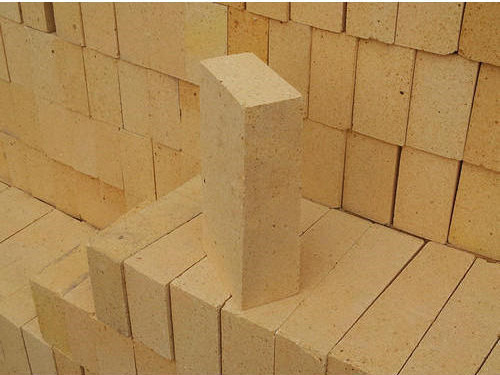The thermal conductivity of refractory bricks is mainly related to the bulk density. The most important thing is the internal structure of the material. Bricks of different materials have different structures. The thermal conductivity is one-to-one corresponding to the temperature. The thermal conductivity is different depending on the purpose.

The thermal conductivity of refractory bricks, that is, their ability to transfer heat, is usually expressed in terms of thermal conductivity. Thermal conductivity refers to the amount of heat passed per unit area in unit time and unit temperature gradient in the process of energy transfer. The thermal conductivity of different materials is often very different. At room temperature, the thermal conductivity of various refractory bricks can range from a few percent to several tens (w/(m·℃)), and the difference between the highest value and the lowest value is nearly a thousand times. As the temperature increases, the thermal conductivity difference of various refractory bricks tends to decrease, but the difference is still very large. For example, at 1000℃, the thermal conductivity of lightweight silica is only about 0.35W/(m·℃); recrystallized silicon carbide products are about 17.5W/(m·℃); graphite can be as high as 35W/(m·℃) .
The thermal conductivity of refractory bricks is not only affected by temperature, but also closely related to its chemical mineral composition and organizational structure. When refractory bricks are composed of crystals, the properties of the crystals have a significant effect on thermal conductivity. As we all know, the thermal conductivity of inorganic non-metallic materials is generally much lower than that of metals. This is because inorganic non-metallic materials are different from metals with metallic bonds and have very few free electrons. In this material, the heat conduction caused by free electrons is extremely limited, and it is mainly determined by the degree of deviation of the lattice vibration from resonance. The greater the deviation from resonance, the smaller the thermal conductivity. The degree of lattice vibration deviation increases with the increase of the difference in the molar mass of the constituent materials, so the thermal conductivity of the elemental substance is the largest (the thermal conductivity of graphite is higher).
A crystal with a complex structure has a greater heat radiation effect on the lattice, and the thermal conductivity becomes smaller. For example, MgO, A12O3 and MgAl2O4 are equiaxed crystals, but due to the complex structure of MgAl2O4, the thermal conductivity is low. Anisotropic crystals have greater thermal conductivity along the direction where the particles are dense. For example, quartz is densely packed along the c-axis direction, and its thermal conductivity (13.6W/(m·℃)) is about twice that of the one perpendicular to the c-axis direction (7.2W/(m·℃)). Another example is the layered structure of graphite, the thermal conductivity parallel to the layer direction is about 4 times the direction perpendicular to the layer. If there are defects in the crystal, such as the formation of a replacement solid solution, the regularity of the crystal structure is destroyed, causing heat scattering, resulting in a decrease in thermal conductivity. Other crystal defects such as vacancies and dislocations have similar effects. Similarly, due to the heat scattering phenomenon of grain boundaries, the thermal conductivity of polycrystalline materials is lower than that of single crystals; materials composed of fine grains are lower than those composed of coarse grains. The material contains impurity components, and because of the scattering effect, it also reduces the thermal conductivity.
When the refractory brick contains a glass phase, due to the disordered amorphous structure, the probability of collision between atoms is high, so the thermal conductivity is lower than that of crystals. When the refractory brick contains pores, the thermal conductivity of the gas is smaller than that of the solid, so as the porosity increases, the thermal conductivity of the material decreases. This is the basic reason for the low thermal conductivity of porous materials.



